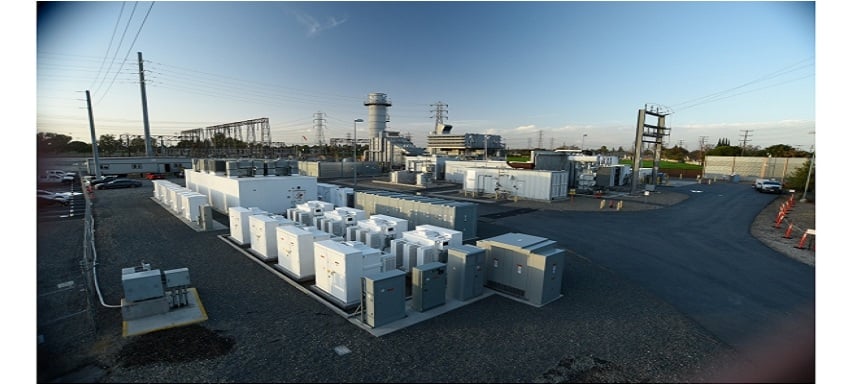GE and Southern California Edison , an Edison International company unveiled the world’s first battery-gas turbine hybrid system in Norwalk, California.
This is the first of two units that GE has delivered for SCE only months after announcing initial deployment plans of this innovative technology.
This system, called the LM6000 Hybrid Electric Gas Turbine (Hybrid EGT)* supports SCE’s increasing renewable energy capacity by providing quick start, fast ramping capabilities when they are needed. The unit integrates a 10 MW/ 4.3 MWh battery energy storage system capable of immediately providing power with GE’s proven 50MW LM6000 aeroderivative gas turbine.
Among the speakers that attended the event were Mary Nichols, Chair, California Air Resources Board (CARB), Jill Whynot, Deputy Executive Officer, Operations South Coast Air Quality Management (SCAQMD) and Tom Doughty, Vice President, California Independent System Operator (CAISO).
“The new system will help SCE better utilize the resources on the grid, provide enhanced reliability, reduce environmental impact, and reduce cost for our operations and for our customers,” said SCE President Ron Nichols. “This technology also allows us to continue to expand our use of solar, wind and other renewable resources.”
GE and SCE developed this system in response to changing energy needs in California. The state has committed to derive 50 percent of its electricity from renewable sources by 2030. The Hybrid EGT helps balance variable energy supply and demand, including during evening hours when the sun sets and solar power production falls while electricity usage surges as customers return home and turn on lights and appliances.
At the heart of the Hybrid EGT is a groundbreaking control system which seamlessly blends output between the battery and the gas turbine. The energy storage capacity of the battery has been specifically designed to provide enough time coverage to allow the gas turbine to start and reach its designated power output. As a result, the system does not need to burn fuel and consume water in stand-by mode to be able to dispatch power immediately when demand surges.
“As the electrical grid network continues to evolve, with more intermittent renewables being added every day, products like the Hybrid EGT can help smooth out the delivery of electricity,” said Reinaldo Garcia, President and CEO of Grid Solutions from GE Energy Connections. “Storage and the ability to quickly push power to the grid also play a key role in emergency situations, dispatching energy immediately to the grid ensuring that we are able help keep the lights on for everyone.”
This innovative combination, along with new emission controls, provides enhanced flexibility in the operation of the peaker while at the same time reducing greenhouse gas emissions and air pollution by 60 percent. In addition, demineralized water consumption will be reduced by approximately 45 percent, saving two million gallons of water annually and increasing the life of the equipment.
Paul McElhinney, President & CEO for GE Power Services added, “We worked with SCE to address a very specific need, but this solution has applications that go far beyond. We look forward to working with customers to develop tailor-made solutions that will allow them greater flexibility when incorporating renewable energy and other quick power needs.”
About GE
GE is the world’s Digital Industrial Company, transforming industry with software-defined machines and solutions that are connected, responsive and predictive. GE is organized around a global exchange of knowledge, the “GE Store,” through which each business shares and accesses the same technology, markets, structure and intellect. Each invention further fuels innovation and application across our industrial sectors. With people, services, technology and scale, GE delivers better outcomes for customers by speaking the language of industry. www.ge.com
About Southern California Edison
An Edison International company, Southern California Edison is one of the nation’s largest electric utilities, serving a population of approximately 15 million via 5 million customer accounts in a 50,000-square-mile service area within Central, Coastal and Southern California.


































